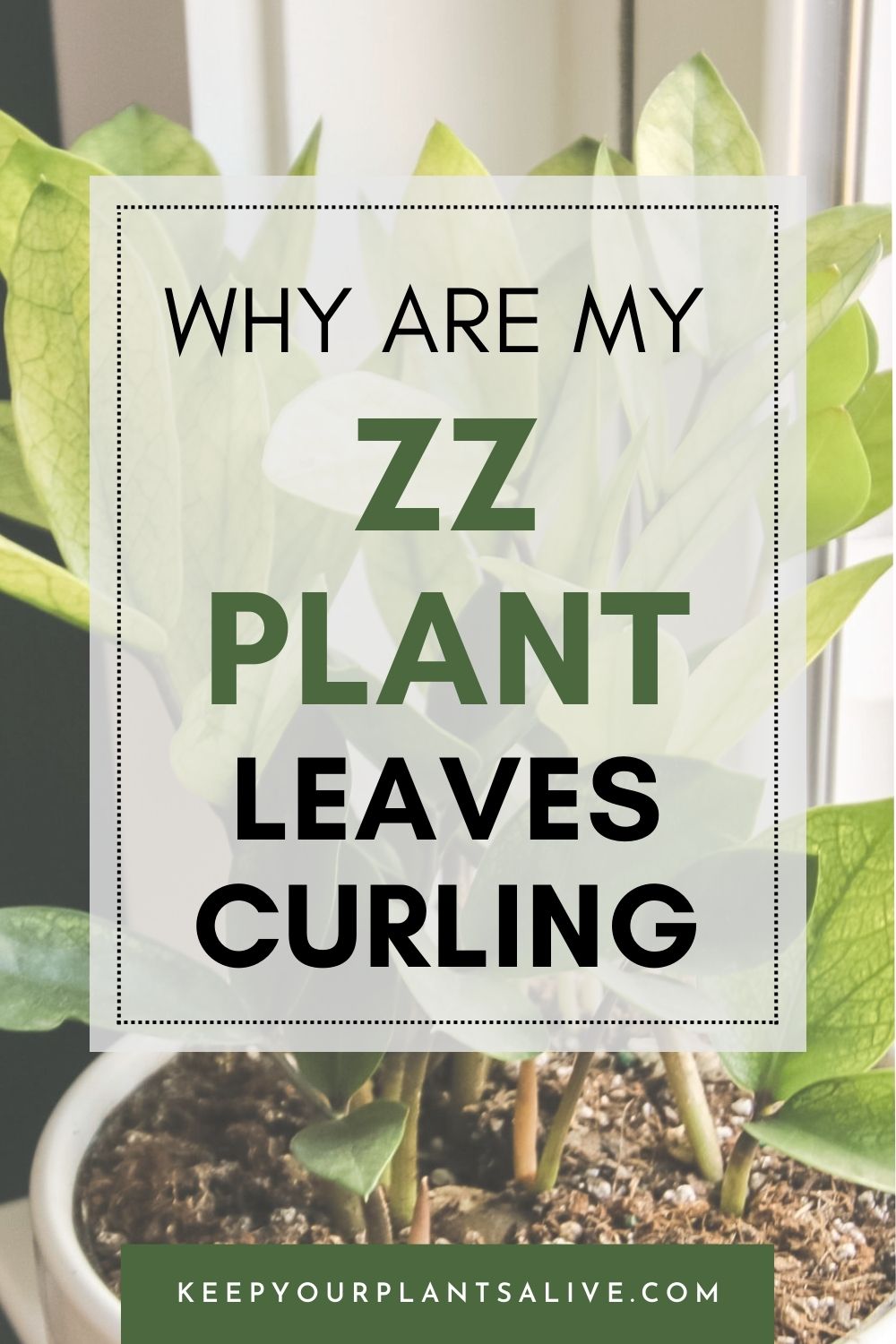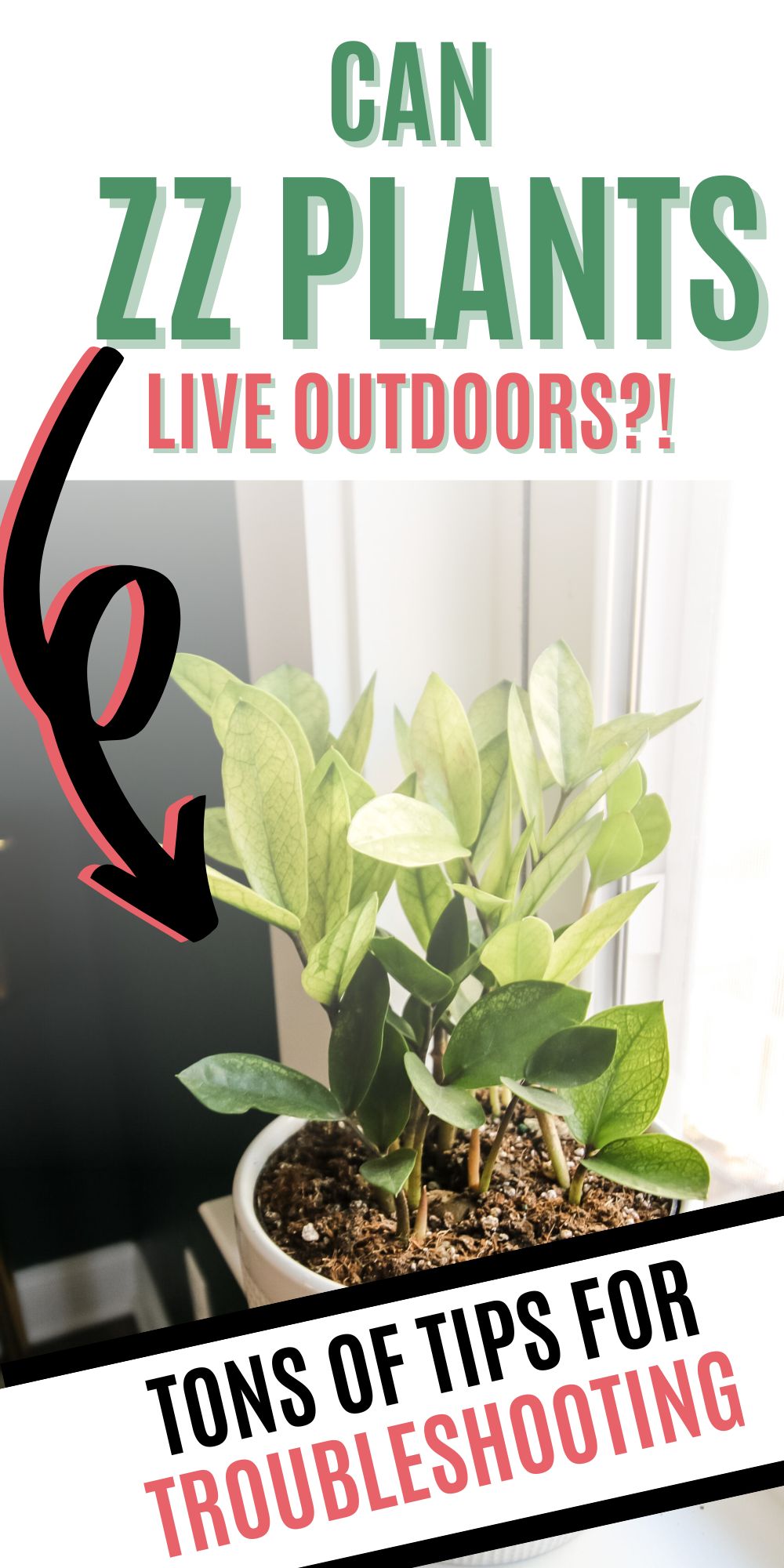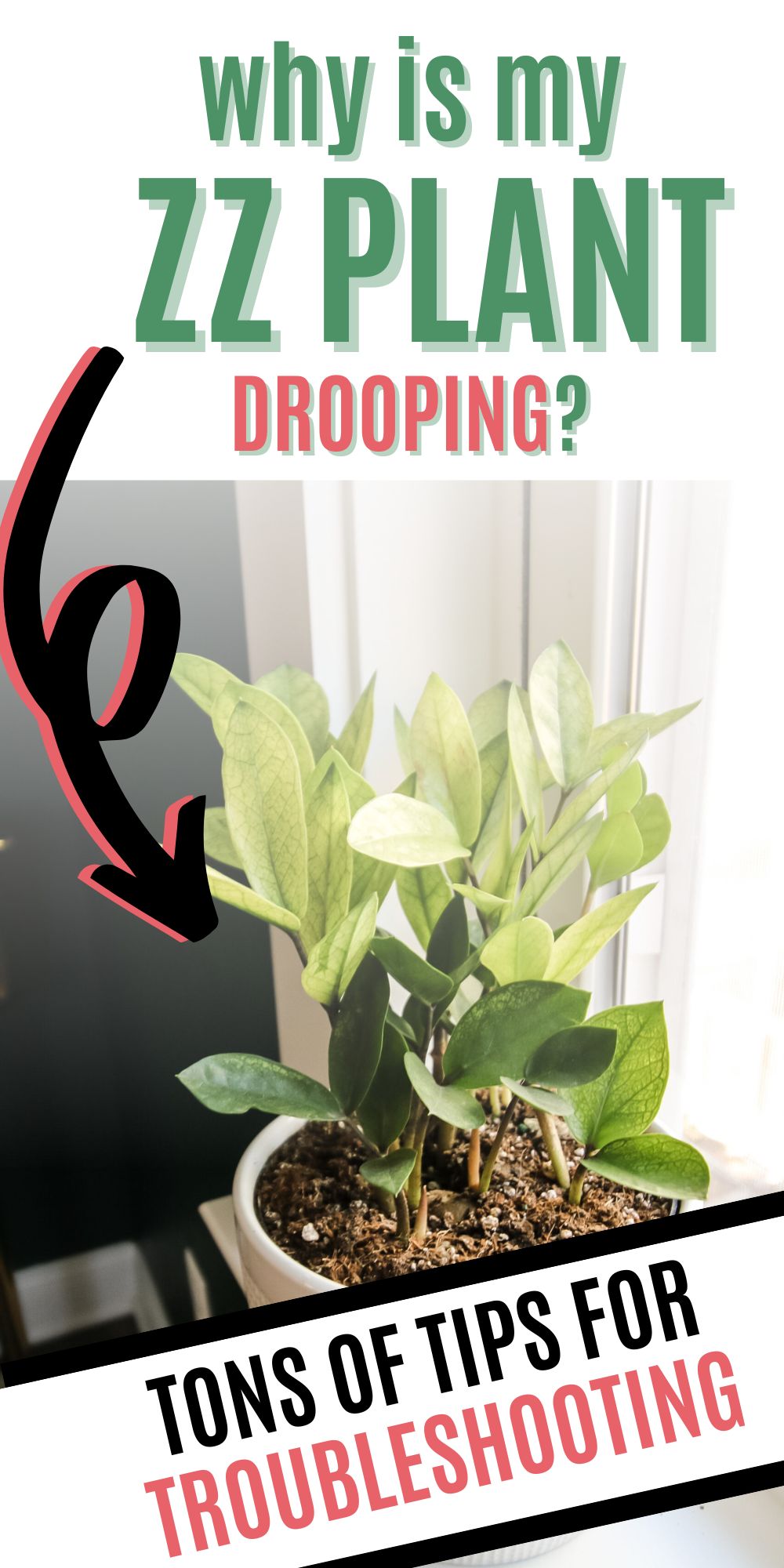Is your ZZ Plant getting too big for it's pot? Here is our complete guide on How to Divide & Repot a ZZ Plant!
The ZZ plant, known scientifically as Zamioculcas zamiifolia, is a super popular, easy care houseplant.
Revered for its glossy leaves and robust looks, no wonder it became such a popular choice among houseplant owners.
That said, if a corner of your home seems unfinishes, just bring in this magnificent plant and revel in the lushness it provides!
Whether you want to expand your indoor garden or repot a ZZ plant for optimum growth, you're at the right place. Our guide will walk you through the steps to repot and divide your ZZ plant.
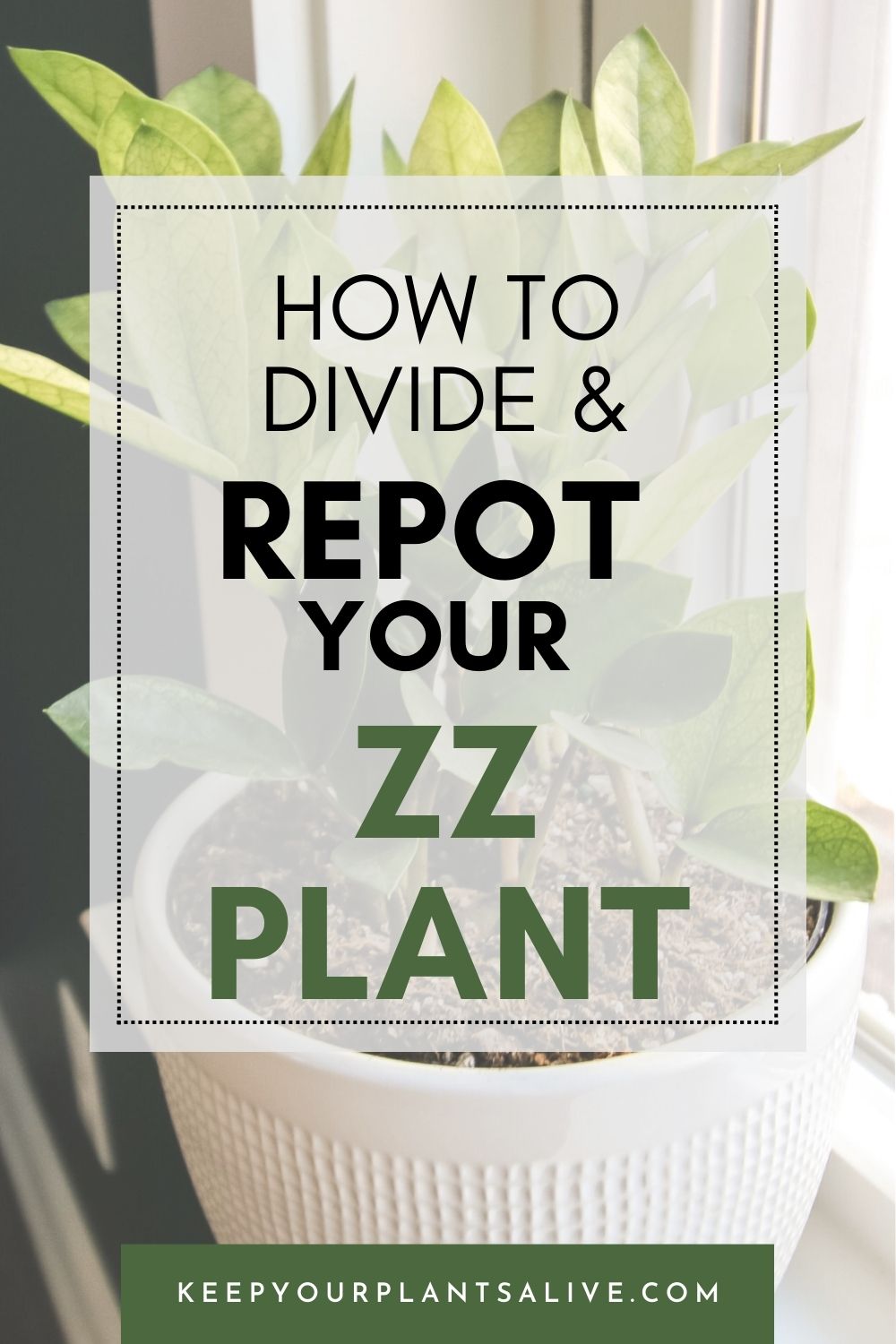
Repotting Time: Setting the Stage for Growth
Just as we occasionally need to move homes for new beginnings, our ZZ plants also thrive on a change of pots, too.
Repotting doesn't just offer them fresh soil - it provides them with space, energy, and the resources to stretch their roots.
When should I repot my ZZ plant?
Repot your ZZ plant at the beginning of the growing season, typically in the spring.
Why spring, you ask? It's when the plant is poised to embark on its fresh growth cycle, making it an opportune moment to give it that extra boost.
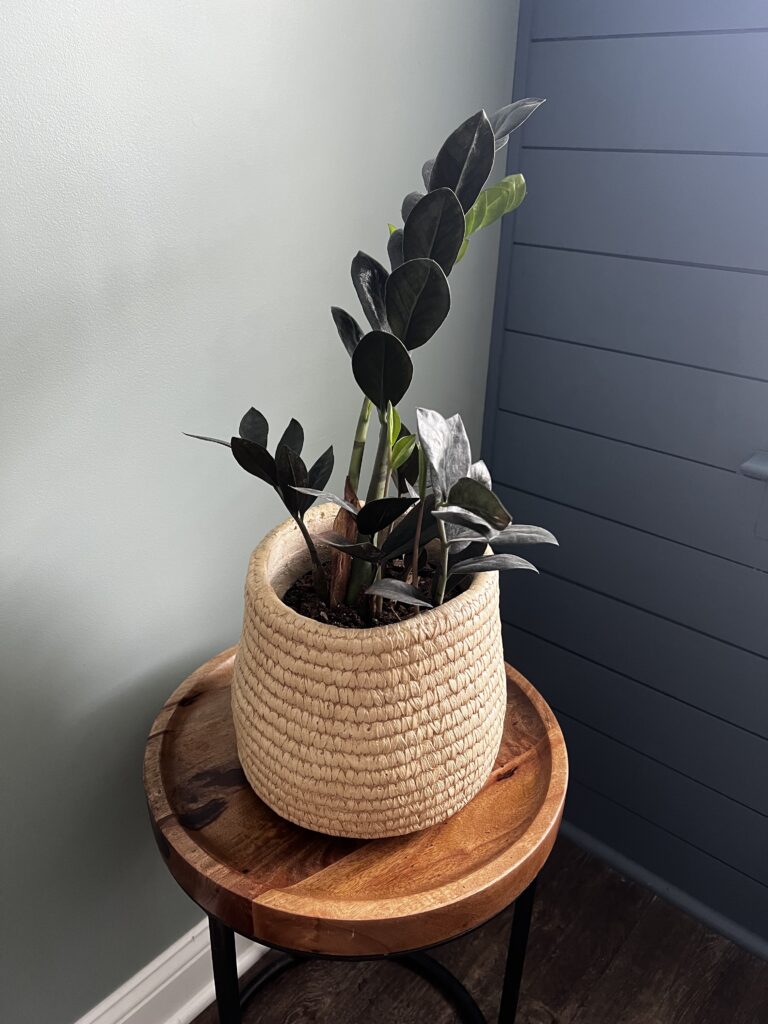
What size pot should I choose for my ZZ plant?
For budding ZZ plants, annual repotting does wonders. However, remember: size matters!
When replanting a ZZ plant and selecting a new pot, only size up a bit, as most of its growing will be focused inwards.
To clarify, the roots will flesh out and grow larger, while the leaves get the love later. And for those venerable, older ZZ plants? They'll appreciate a repot every 2 to 3 years.
Finally, remember this: the ZZ plant doesn't stand soaking in water. It is essential that your pot have drainage holes so that water does not pool on the roots.
Also, if you spot bugs, overly-moist soil, or spots on the leaves, we suggest repotting your ZZ plant immediately.
Just ensure to air dry its roots for a few hours before placing it in dry soil with hummus for drainage.
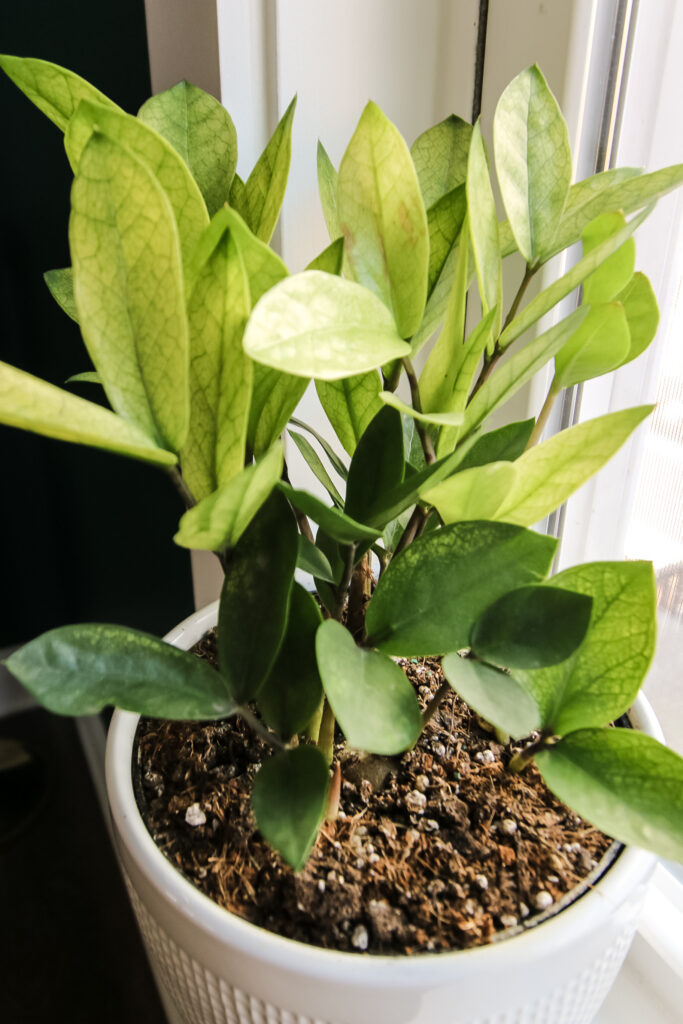
Propagating ZZ Plants: Three Easy Ways
Because this green beauty is known for growing rapidly, a repot for a ZZ plant is almost a standard.
And every gardener knows that just one plant is never enough, so naturally, you want to expand your garden with this specific plant.
Fortunately enough, propagating a ZZ plant has never been easier!
Every plant has its unique strengths, and with the ZZ plant, versatility in propagation ranks high.
The beauty of propagating ZZ plants lies in their flexibility. If you're a true green thumb, you have the freedom to select your preferred method:
- division
- stem cuttings
- leaf cuttings
From dividing the plant at its natural growth points to using its stems and leaves as the genesis of new life, each technique has its charm and efficacy. Let's dive deeper into each one.
Propagating ZZ plants by Division: The Natural Split
ZZ propagation is akin to letting nature take its course. This method simply involves separating the plant into its natural growth divisions.
It's a gentle way to multiply the plant while ensuring each division stands robust with a mix of old and new stems.
This method is particularly recommended for mature ZZ plants that have grown significantly.
- Preparation: Begin by gently removing your ZZ plant from its pot. Loosen the roots and shake off the old soil to expose the rhizomes.
- Spot the natural divisions: Look carefully, and you'll notice natural separations in the root structure. These are your divisions in waiting!
- Gentle separation: Using your fingers, patiently and carefully, pry apart the sections. Ensure that each division has a mix of old and new stems for better propagation odds.
- Replant: Plant each division in its pot filled with our recommended compost. Firm the soil gently around the roots.
- Water and wait: Water your newly potted divisions sparingly and place them in a bright spot away from direct sunlight. Eventually, they will establish themselves and grow as independent plants.
How to Propagate ZZ plants with Stem Cuttings
Stem cuttings might sound surgical, but it's simply about harnessing the power of each stem.
Selecting a healthy stem means you're on your way to creating a brand-new ZZ plant.
This method is perfect for those who multiply their plants without disturbing the root system.
- Select and snip: Choose a healthy stem and take a ZZ plant cutting, ensuring it has 2-3 leaves.
- Let it rest: Allow the cut section to air dry (callous) for a day to prevent rot.
- Plant: Insert the stem cutting into a pot with fresh, well-draining compost.
- Water and observe: Water sparingly and place the pot in indirect sunlight. In a few weeks, you'll notice new growth signaling successful propagation.
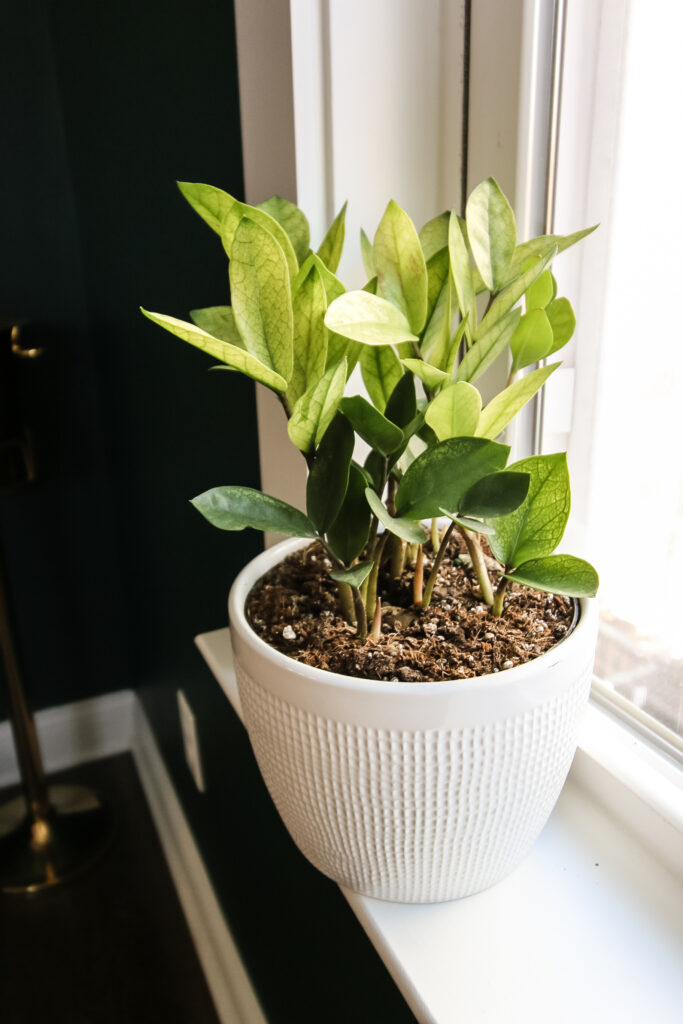
How to propagate a ZZ plant with Leaf Cuttings
Leaf cuttings are all about celebrating the potential housed in each leaf of the ZZ plant. It's a testament to the plant's resilience and versatility.
This propagating ZZ plant method might test your patience a bit more, but the joy of seeing a new plant sprout from a leaf segment is incomparable.
- Pick a leaf: Choose a mature, healthy leaf.
- Segmentation: Cut the leaf into segments, each about 2-3 inches long.
- Let it dry: Allow the segments to dry for a day.
- Plant: Insert the dried segments halfway into the soil in a pot.
- Wait: Place the pot in a bright area, water occasionally, and be patient. It might take time, but leaf cuttings will eventually sprout roots and a new plantlet.

Our Final Tips
There you have it - propagating a ZZ plant in just a few simple steps! But remember this: every plant, every leaf, every rhizome tells a story.
With patience and a touch of care, you aren't just propagating a plant; you're curating tales of green growth.
Growth and beauty don’t happen in a blink of an eye - and you shouldn't expect this from your plant either!
Any more questions about your ZZ plant?
Thanks for reading!


Hey there, I'm Morgan, a houseplant enthusiast from sunny Charleston, South Carolina. Growing up surrounded by my mom's lush orchids and African violets, I discovered the magic of bringing nature indoors. Thanks to the pandemic, I delved deeper into houseplants, discovering their power to uplift moods and transform spaces. I'm here to spill all my secrets, helping you pick the perfect houseplant - and make it happy. Let's keep your plants alive, together! 😊


